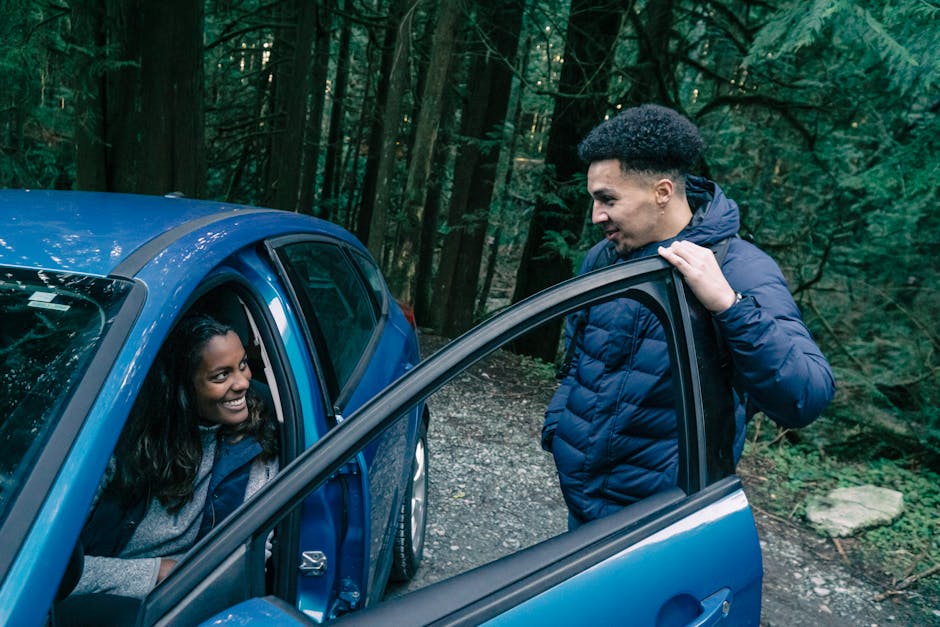Safety First: Car Buying Guides Focused on Family Vehicles
When it comes to buying a car for your family, safety is paramount. With countless vehicles on the market, finding the one that offers the best protection for your loved ones can be daunting. This guide will help you navigate the essential features and considerations when choosing a family vehicle, from safety ratings to child-friendly amenities.
Understanding Safety Ratings
Safety ratings are crucial in determining how well a vehicle can protect its occupants during a crash. Organizations such as the National Highway Traffic Safety Administration (NHTSA) and the Insurance Institute for Highway Safety (IIHS) provide comprehensive safety evaluations. These ratings consider various factors, including crashworthiness, crash avoidance, and post-crash survivability.
The NHTSA uses a star rating system, with five stars being the highest score. The IIHS provides ratings of "Good," "Acceptable," "Marginal," and "Poor" for different crash tests. Vehicles that earn high marks in these assessments are considered safer options for families.
For example, the Honda Odyssey and Toyota Sienna have consistently received top ratings from both NHTSA and IIHS, making them reliable choices for family transportation (nhtsa.gov).
Essential Safety Features
Modern vehicles come equipped with numerous safety features designed to prevent accidents and protect passengers. Some essential features to look for include:
- Anti-lock Braking System (ABS): Prevents wheels from locking up during sudden braking, enhancing control.
- Electronic Stability Control (ESC): Helps maintain vehicle stability during sharp turns or slippery conditions.
- Advanced Airbags: Multiple airbags protect occupants from various angles in case of a collision.
- Blind Spot Monitoring: Alerts drivers to vehicles in their blind spots, reducing the risk of lane-change accidents.
- Rearview Camera: Assists with parking and reversing by providing a clear view of obstacles behind the vehicle.
Vehicles like the Subaru Ascent and Ford Explorer offer these advanced safety features as standard or optional upgrades, ensuring peace of mind for family drivers (iihs.org).

Child-Friendly Amenities

A family car should not only be safe but also accommodate the needs of children. Look for vehicles with child-friendly amenities that make trips more comfortable and enjoyable:
- LATCH System: Easy-to-use anchors for securing child seats without seat belts.
- Rear Seat Entertainment: Built-in screens and media players to keep kids entertained on long journeys.
- Cargo Space: Ample storage capacity for strollers, sports equipment, and groceries.
- Climate Control: Rear-seat air conditioning vents to keep everyone comfortable.
- Easily Accessible Seats: Sliding doors or captain's chairs for convenient access to rear seats.
The Chrysler Pacifica is an excellent example of a minivan that excels in providing child-friendly features, making it a favorite among families (consumerreports.org).
Comparing Popular Family Vehicles
| Vehicle Model | Safety Rating (NHTSA/IIHS) | Key Features |
|---|---|---|
| Toyota Sienna | 5-Star/Good | Blind Spot Monitoring, Rearview Camera, LATCH System |
| Honda Odyssey | 5-Star/Good | Easily Accessible Seats, Advanced Airbags, Rear Seat Entertainment |
| Subaru Ascent | 5-Star/Good | Easily Accessible Seats, Advanced Airbags, Rear Seat Entertainment |
Mileage and Maintenance Considerations
Mileage and maintenance are crucial factors when selecting a family vehicle. A car with good fuel efficiency reduces long-term costs and environmental impact. According to the U.S. Department of Energy, hybrid and electric vehicles often offer superior mileage compared to traditional gasoline-powered cars (energy.gov). For example, the Toyota Highlander Hybrid provides excellent fuel economy without sacrificing performance or space.
Maintenance costs can also add up over time. Researching the reliability and average maintenance expenses of potential vehicles can save money in the long run. Consumer Reports offers detailed reliability ratings based on owner surveys, helping buyers make informed decisions (consumerreports.org). Models like the Honda CR-V and Toyota RAV4 are known for their low maintenance needs and high reliability ratings.
The Role of Test Drives and Reviews
No amount of research can replace the experience of a test drive. Visiting dealerships and taking potential vehicles for a spin allows you to assess comfort, handling, and overall suitability for your family's needs. Pay attention to how easy it is to install car seats, access controls, and manage cargo space during these test drives.
User reviews from other families can also provide valuable insights. Websites like Edmunds offer user-generated reviews that highlight real-world experiences with various models (edmunds.com). These reviews often cover aspects that professional evaluations might miss, such as everyday usability and minor quirks.
Selecting a family vehicle requires careful consideration of safety ratings, essential features, child-friendly amenities, mileage, maintenance costs, and firsthand experiences through test drives and user reviews. By prioritizing these factors, families can find a car that ensures both safety and comfort on every journey.